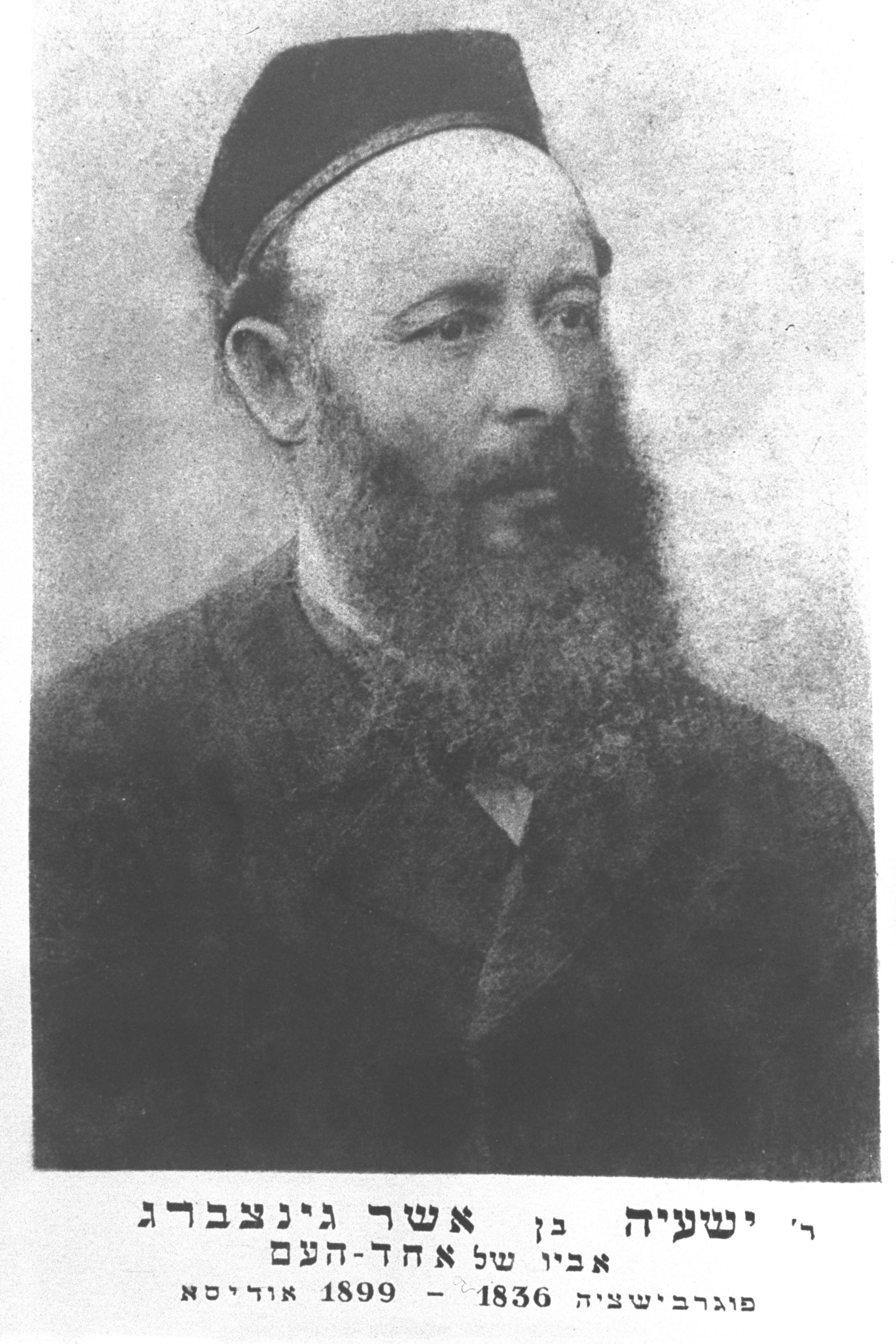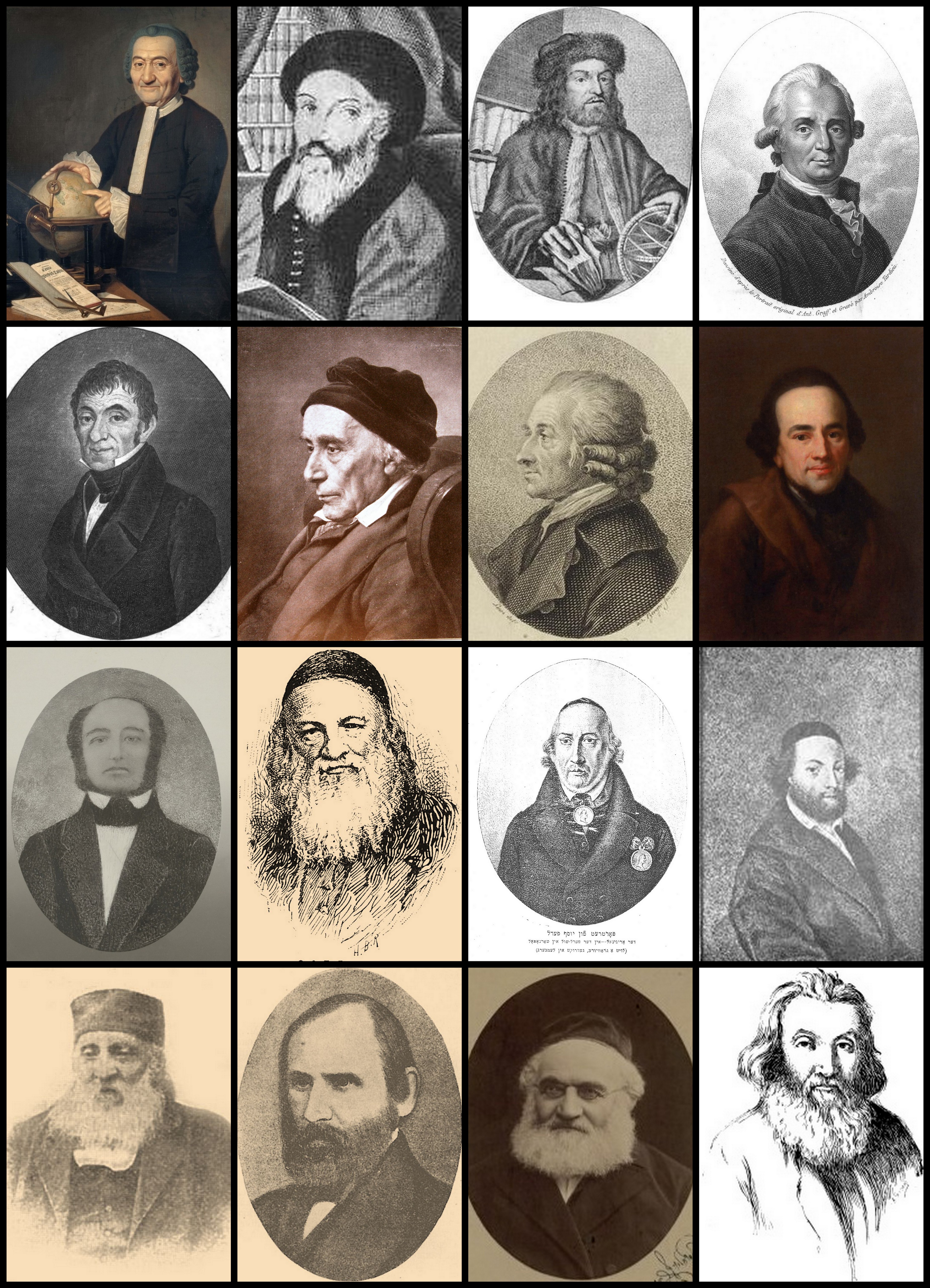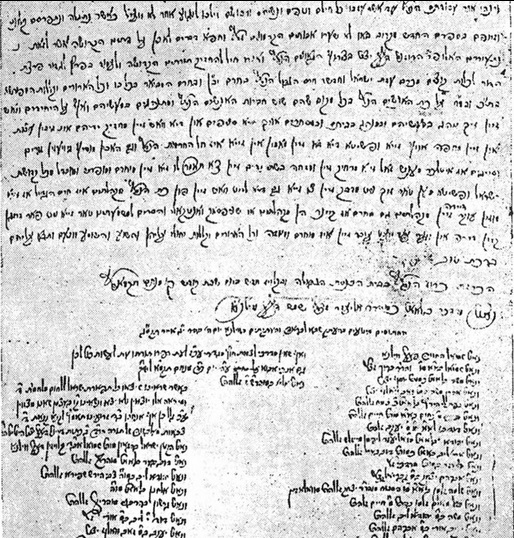|
Ahad Ha’Am
Asher Zvi Hirsch Ginsberg (18 August 1856 – 2 January 1927), primarily known by his Hebrew name and pen name Ahad Ha'am (, lit. 'one of the people', ), was a Hebrew journalist and essayist, and one of the foremost pre-state Zionist thinkers. He is known as the founder of cultural Zionism. With his vision of a Jewish "spiritual center" in Eretz Israel, his views regarding the purpose of a Jewish state contrasted with those of prominent figures within the Zionist movement such as Theodor Herzl, the founder of political Zionism. Unlike Herzl, Ahad Ha'am strived for "a Jewish state and not merely a state of Jews". Biography Ginsberg was born in Skvyra, in the Kiev Governorate of the Russian Empire (present-day Ukraine) to wealthy Hasidic parents. The town was located in the Pale of Settlement, which constituted an area in the Russian Empire in which Jews were legally allowed to reside. Ginsberg felt little affection for the town, describing it as "one of the most benighted spots ... [...More Info...] [...Related Items...] OR: [Wikipedia] [Google] [Baidu] |
Skvyra
Skvyra (, ) is a city in Bila Tserkva Raion, Kyiv Oblast (region) of central Ukraine. Skvyra has an area of . It hosts the administration of Skvyra urban hromada, one of the hromadas of Ukraine. Its population is approximately Name In addition to the Ukrainian (''Skvyra''), the name of the city in Yiddish is ''Skver'', . History The ancient town of Skvyra was completely destroyed at the end of the 16th century. In 1736, Skvyra was mentioned as a village (''selo'') leased by a Jewish lessee. According to the census of 1765, there were 124 houses in Skvyra, 51 of which belonged to Jews. In 1775, 116 Jews lived in Skvyra, in 1784 there were 204, and in 1787, 144. After Skvyra was included in the Pale of Settlement the town's Jewish community increased. Its Jewish population was 2,184 in 1847 and grew to 8,910 in 1897 — 49.5% of the general population. At the end of the 19th century Skvyra had seven synagogues, a parochial school, a hospital, a pharmacist and a district doct ... [...More Info...] [...Related Items...] OR: [Wikipedia] [Google] [Baidu] |
Orthodox Judaism
Orthodox Judaism is a collective term for the traditionalist branches of contemporary Judaism. Theologically, it is chiefly defined by regarding the Torah, both Torah, Written and Oral Torah, Oral, as literally revelation, revealed by God in Judaism, God on Mount Sinai (Bible), Mount Sinai and faithfully transmitted ever since. Orthodox Judaism therefore advocates a strict observance of Jewish Law, or ''halakha'', which is to be Posek, interpreted and determined only according to traditional methods and in adherence to the continuum of received precedent through the ages. It regards the entire ''halakhic'' system as ultimately grounded in immutable revelation, essentially beyond external and historical influence. More than any theoretical issue, obeying the Kosher, dietary, Tumah and taharah, purity, ethical and other laws of ''halakha'' is the hallmark of Orthodoxy. Practicing members are easily distinguishable by their lifestyle, refraining from doing 39 Melakhot, numerous rou ... [...More Info...] [...Related Items...] OR: [Wikipedia] [Google] [Baidu] |
Dmitry Pisarev
Dmitry Ivanovich Pisarev ( – ) was a Russian literary critic and philosopher who was a central figure of Russian nihilism. He is noted as a forerunner of Nietzschean philosophy, and for the impact his advocacy of liberation movements and natural science had on Russian history. A critique of his philosophy became the subject of Fyodor Dostoevsky's celebrated novel ''Crime and Punishment''. Indeed, Pisarev's philosophy embraces the nihilist aims of negation and value-destruction; in freeing oneself from all human and moral authority, the nihilist becomes ennobled above the common masses and free to act according to sheer personal preference and usefulness. These ''new types'', as Pisarev termed them, were to be pioneers of what he saw as the most necessary step for human development, namely the reset and destruction of the existing mode of thought. Among his most famous locutions is: "What can be smashed must be smashed. Whatever withstands the blow is fit to survive; what fli ... [...More Info...] [...Related Items...] OR: [Wikipedia] [Google] [Baidu] |
Middle Ages
In the history of Europe, the Middle Ages or medieval period lasted approximately from the 5th to the late 15th centuries, similarly to the post-classical period of global history. It began with the fall of the Western Roman Empire and transitioned into the Renaissance and the Age of Discovery. The Middle Ages is the middle period of the three traditional divisions of Western history: classical antiquity, the medieval period, and the modern period. The medieval period is itself subdivided into the Early, High, and Late Middle Ages. Population decline, counterurbanisation, the collapse of centralised authority, invasions, and mass migrations of tribes, which had begun in late antiquity, continued into the Early Middle Ages. The large-scale movements of the Migration Period, including various Germanic peoples, formed new kingdoms in what remained of the Western Roman Empire. In the 7th century, North Africa and the Middle East—once part of the Byzantine Empire� ... [...More Info...] [...Related Items...] OR: [Wikipedia] [Google] [Baidu] |
Talmud
The Talmud (; ) is the central text of Rabbinic Judaism and the primary source of Jewish religious law (''halakha'') and Jewish theology. Until the advent of Haskalah#Effects, modernity, in nearly all Jewish communities, the Talmud was the centerpiece of Jewish culture, Jewish cultural life and was foundational to "all Jewish thought and aspirations", serving also as "the guide for the daily life" of Jews. The Talmud includes the teachings and opinions of thousands of rabbis on a variety of subjects, including halakha, Jewish ethics, Jewish philosophy, philosophy, Jewish customs, customs, Jewish history, history, and Jewish folklore, folklore, and many other topics. The Talmud is a commentary on the Mishnah. This text is made up of 63 Masekhet, tractates, each covering one subject area. The language of the Talmud is Jewish Babylonian Aramaic. Talmudic tradition emerged and was compiled between the destruction of the Second Temple in 70 CE and the Arab conquest in the early seve ... [...More Info...] [...Related Items...] OR: [Wikipedia] [Google] [Baidu] |
Tzadik
Tzadik ( ''ṣaddīq'' , "righteous ne; also ''zadik'' or ''sadiq''; pl. ''tzadikim'' ''ṣadīqīm'') is a title in Judaism given to people considered righteous, such as biblical figures and later spiritual masters. The root of the word ''ṣadiq'', is '' ṣ- d- q'' ( ''tsedek''), which means "justice" or " righteousness". When applied to a righteous woman, the term is inflected as ''tzadeket'' singularly or ''tzidkaniot'' in the plural. ''Tzadik'' is also the root of the word '' tzedakah'' ('charity', literally 'righteousness'). The term ''tzadik'' "righteous", and its associated meanings, developed in rabbinic thought from its Talmudic contrast with ''hasid'' ("pious" honorific), to its exploration in ethical literature, and its esoteric spiritualisation in Kabbalah. Since the late 17th century, in Hasidic Judaism, the institution of the mystical tzadik as a divine channel assumed central importance, combining popularization of (hands-on) Jewish mysticism with soci ... [...More Info...] [...Related Items...] OR: [Wikipedia] [Google] [Baidu] |
Yeshaya Ginsberg D22-092
Isaiah ( or ; , ''Yəšaʿyāhū'', "Yahweh is salvation"; also known as Isaias or Esaias from ) was the 8th-century BC Israelite prophet after whom the Book of Isaiah is named. The text of the Book of Isaiah refers to Isaiah as "the prophet", but the exact relationship between the Book of Isaiah and the actual prophet Isaiah is complicated. The traditional view is that all 66 chapters of the book of Isaiah were written by one man, Isaiah, possibly in two periods between 740 BC and 686 BC, separated by approximately 15 years. Another widely held view suggests that parts of the first half of the book (chapters 1–39) originated with the historical prophet, interspersed with prose commentaries written in the time of King Josiah 100 years later, and that the remainder of the book dates from immediately before and immediately after the end of the 6th-century BC exile in Babylon (almost two centuries after the time of the historical prophet), and that perhaps these later cha ... [...More Info...] [...Related Items...] OR: [Wikipedia] [Google] [Baidu] |
Wissotzky Tea
Wissotzky Tea () is an international, family-owned tea company based in Israel with offices in London and the United States. It is the leading tea distributor in Israel. Founded in 1849 in Moscow, Russia, it became the largest tea firm in the Russian Empire. By the early 20th century, it was the largest tea manufacturer in the world. It is one of the oldest tea companies in the world. The Wissotzky Tea Company is headed by Shalom Seidler, a descendant of Shimon Zeidler; the latter, related to Wissotzky by marriage, opened the Middle East branch of the company in 1936. The company's headquarters are located in Tel Aviv while production takes place at a factory located in the Galilee; the company employs about 400 workers. The company enjoys a 76% hold in the local market and exports its products worldwide. Wissotzky Tea is distributed in Canada, UK, Australia, Japan and South Korea, Europe, Hungary, Russia, Ukraine and the US kosher market, entering the United States mass market w ... [...More Info...] [...Related Items...] OR: [Wikipedia] [Google] [Baidu] |
Shlomo Ginossar
Shlomo Ginossar (; born Shlomo Ginzberg October 16, 1889 – January 1, 1969) was a Zionist activist and Israeli diplomat. Biography He was born in Odessa, Ukraine. Shlomo Ginzberg, (later Ginossar) immigrated with his family from Russian to the Ottoman Empire as a young man. He was the son of Ahad Ha'am. His future wife, Rosa, was the daughter of family friends.''Encyclopaedia Judaica'', 2 ed., vol. 7, Ginossar (Née Hacohen), Rosa, Macmillan Reference USA, 2007, pp. 607-608 In 1910, they studied at the University of Paris together and married in Switzerland in 1917. He was the chief Administrator of the Hebrew University of Jerusalem and Israel's Ambassador to Italy from 1949 until 1951. Ginossar was a resident of Jerusalem's Rehavia neighborhood. [...More Info...] [...Related Items...] OR: [Wikipedia] [Google] [Baidu] |
Maskil
The ''Haskalah'' (; literally, "wisdom", "erudition" or "education"), often termed the Jewish Enlightenment, was an intellectual movement among the Jews of Central and Eastern Europe, with a certain influence on those in Western Europe and the Muslim world. It arose as a defined ideological worldview during the 1770s, and its last stage ended around 1881, with the rise of Jewish nationalism. The movement advocated against Jewish reclusiveness, encouraged the adoption of prevalent attire over traditional dress, while also working to diminish the authority of traditional community institutions such as rabbinic courts and boards of elders. It pursued a set of projects of cultural and moral renewal, including a revival of Hebrew for use in secular life, which resulted in an increase in Hebrew found in print. Concurrently, it strove for an optimal integration in surrounding societies. Practitioners promoted the study of exogenous culture, style, and vernacular, and the adoption ... [...More Info...] [...Related Items...] OR: [Wikipedia] [Google] [Baidu] |
Misnagdim
''Misnagdim'' (, "Opponents"; Sephardi pronunciation: ''Mitnagdim''; singular ''misnaged / mitnaged'') was a Jewish religious movements, religious movement among the Eastern European Jewry, Jews of Eastern Europe which resisted the rise of Hasidic Judaism, Hasidism in the 18th and 19th centuries. The ''Misnagdim'' were particularly concentrated in Lithuanian Jews, Lithuania, where Vilnius served as the bastion of the movement, but anti-Hasidic activity was undertaken by the establishment in many locales. The most severe clashes between the factions took place in the latter third of the 18th century; the failure to contain Hasidism led the ''Misnagdim'' to develop distinct religious philosophies and communal institutions, which were not merely a perpetuation of the old status quo but often innovative. The most notable results of these efforts, pioneered by Chaim of Volozhin and continued by his disciples, were the modern, independent ''yeshiva'' and the Musar movement. Since the ... [...More Info...] [...Related Items...] OR: [Wikipedia] [Google] [Baidu] |
Judaism
Judaism () is an Abrahamic religions, Abrahamic, Monotheism, monotheistic, ethnic religion that comprises the collective spiritual, cultural, and legal traditions of the Jews, Jewish people. Religious Jews regard Judaism as their means of observing the Mosaic covenant, which they believe was established between God in Judaism, God and the Jewish people. The religion is considered one of the earliest monotheistic religions. Jewish religious doctrine encompasses a wide body of texts, practices, theological positions, and forms of organization. Among Judaism's core texts is the Torah—the first five books of the Hebrew Bible—and a collection of ancient Hebrew scriptures. The Tanakh, known in English as the Hebrew Bible, has the same books as Protestant Christianity's Old Testament, with some differences in order and content. In addition to the original written scripture, the supplemental Oral Torah is represented by later texts, such as the Midrash and the Talmud. The Hebrew ... [...More Info...] [...Related Items...] OR: [Wikipedia] [Google] [Baidu] |







